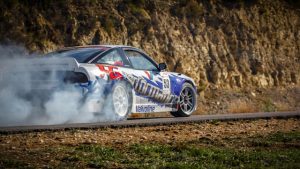 There are many types of racing; regulations are constantly changing to meet new safety requirements and the needs of spectators, sponsors and the pilots themselves. New types of racing are born, such as drag racing, and subsequently, they are separated into separate disciplines. But we can name the main seven areas:
There are many types of racing; regulations are constantly changing to meet new safety requirements and the needs of spectators, sponsors and the pilots themselves. New types of racing are born, such as drag racing, and subsequently, they are separated into separate disciplines. But we can name the main seven areas:
Circuit racing
Everything is simple here. These are the same classic races that everyone has watched at least once in their life on TV. The rules are simple: there is a circular racing track with a carefully prepared asphalt surface, many turns and stands for spectators.
Pilots can participate individually or as part of teams. Whoever covered the distance before others and remained intact is the winner, who is doused with champagne and receives a prize and national love.
Circuit racing is usually the most spectacular; large races attract hundreds of thousands of fans, and for motorsports’ benefit, there are vast industry manufacturers of cars, clothing, and equipment for pilots and car simulators. During races, the count is in fractions of a second, for which the best pilots and engineers in the world.
Fight, everything is large-scale and aesthetically pleasing. Different races involve a different number of laps, but they can be called short: only one race lasts up to 2 hours.
Endurance racing
The name of the race speaks for itself: in addition to speed, pilots have to demonstrate perseverance and teamwork. During pit stops, drivers take turns, allowing each other to recover and return behind the wheel. You can actually hire super cars to do this!
Depending on the rules, the crew can have 3 to 8 people, each of whom spends several hours behind the car’s wheel. There is no time to sleep; sometimes, there is also time to eat; this is an actual race to exhaustion! As in classic circuit racing, races are held on an asphalt track, but here, they are much longer and can last up to 24 hours.
 Rallies and rally raids
Rallies and rally raids
You also cannot help but know about the famous Dakar rally, which has been used as “Paris-Dakar”. This is where the best racing is for those open to more than the monotonous track!
Rally races are often held within the city, and the streets are blocked off for them, but, as they say, not with asphalt alone: the surface can be much more enjoyable. Outside the city, there may be sand and gravel; in the cold season, there is snow and ice; pilots must train on different surfaces to be prepared for anything.
Usually, the route is divided into sections: relatively calm stretches are followed by special sections that take energy, time and, often, fragments of cars. The length of the routes for rally-raid races amounts to thousands of kilometres, and the team independently draws up a schedule for movement, sleep and rest based on the “legend” – the track to be covered.
Here, we are no longer talking about super-light cars: the wear resistance and cross-country ability are priced. Compared to the almost “sterile” conditions of a classic track, here, a lot depends on the type of road surface, as well as on the ability of the crew, if necessary, to quickly repair the car and hit the road again. It’s an option for the strong-willed; there’s no way to say it.
The classic rally distance varies from 70 to 500 km and occurs over several days. It would help to give it your all from the beginning to the first special section.

No Responses